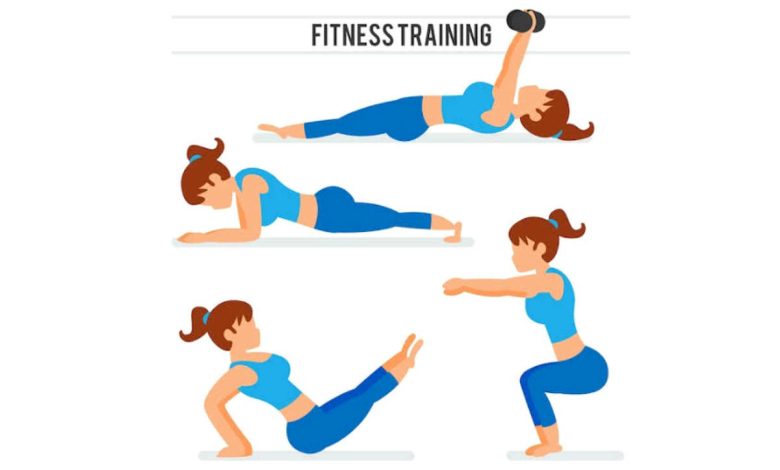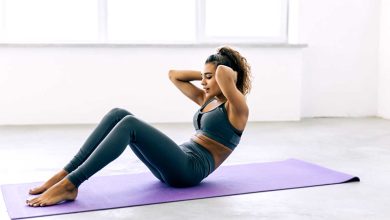Ultimate Guide to Upper Body Cardio Exercise

(Upper Body Cardio Exercise and Benefits)
When we think of cardio, images of running, cycling, and jumping often come to mind—activities that primarily engage our lower body muscles. However, upper body cardio exercises are equally important and offer unique benefits, especially for those seeking a balanced workout regimen, injury recovery options, or a break from lower-body-focused routines. Let’s explore the world of upper body cardio exercises, learn about their benefits, and dive into specific exercises to power up your fitness routine.
Why Focus on Upper Body Cardio Exercise?
1.Enhanced Cardiovascular Health: Like lower-body cardio, upper body cardio promotes heart health by raising your heart rate. It engages muscles in the chest, arms, shoulders, and back, providing a unique way to improve circulation and cardiovascular fitness without relying heavily on leg movements.
2.Improved Muscle Endurance and Tone: Focusing on upper body cardio also helps build muscle endurance in areas often neglected in traditional cardio. Over time, this can improve muscle tone and strength, creating a balanced physique.
3.Weight Loss and Calorie Burn: Although lower-body-focused cardio exercises typically burn more calories, upper body cardio still contributes to calorie expenditure and can assist in weight loss, especially when combined with a full-body routine.
4.Variety and Balance in Workouts: If you’re prone to lower-body injuries or fatigue, adding upper body cardio exercises can balance your workout routine. These exercises are excellent for diversifying your regimen and allowing your legs a chance to recover.
5.Accessibility for All Levels: Upper body cardio exercises can be easily modified, making them accessible to beginners, people with limited mobility, or anyone looking to vary their exercise routine.
Key Muscles Targeted in Upper Body Cardio Exercise
To understand the mechanics behind upper body cardio exercises, let’s review the primary muscles engaged:
- Pectorals (Chest): Essential for pushing movements and contribute to the power of many arm exercises.
- Deltoids (Shoulders): Vital for raising and rotating the arms; important in high-rep or fast-paced upper body movements.
- Biceps and Triceps (Arms): Engage heavily during pulling and pushing movements.
- Latissimus Dorsi (Back): Key for pulling actions, particularly in exercises like rowers.
- Core Muscles: Even though these exercises target the upper body, a strong core helps stabilize and control movements.
10 Best Upper Body Cardio Exercises
1.Punching Combos
How to Do It: Stand in a boxing stance with one foot forward, keeping your fists by your face. Jab forward with your front hand, followed by a cross from your back hand. Return to your guard position after each punch.
Benefits: Enhances shoulder and arm endurance, and raises the heart rate quickly. Effective for improving coordination and cardiovascular fitness.
Modifications: Add hooks, uppercuts, or footwork for variation, or hold light weights for added resistance.
2.Battle Ropes
How to Do It: Hold a rope in each hand and alternate raising and lowering your arms, creating waves in the ropes. Vary between small, fast waves and larger, slower ones.
Benefits: Targets the entire upper body, including shoulders, arms, and core, while elevating the heart rate.
Modifications: Try double-arm slams or side-to-side waves for different muscle engagement.
3.High Knees with Arm Reach
How to Do It: Stand tall with your feet hip-width apart. Raise one knee to waist height as you simultaneously reach up with the opposite arm. Alternate sides in a quick, marching rhythm.
Benefits: Engages both the upper and lower body, making it a full-body cardio move. Strengthens the core and improves coordination.
Modifications: Speed up the movement or add light dumbbells in each hand.
4.Speed Bag Punch
How to Do It: Stand with feet hip-width apart, holding your fists in front of your face. Rapidly circle your fists as if hitting a speed bag.
Benefits: Builds shoulder endurance, improves hand-eye coordination, and raises heart rate.
Modifications: Change the tempo or rotate your body while performing the movement to engage your core.
5.Push-Up Variations
How to Do It: Start in a high plank with hands shoulder-width apart. Lower your body to the ground and push back up.
Benefits: Works the chest, shoulders, triceps, and core. High repetitions increase cardiovascular demand.
Modifications: Try explosive push-ups, diamond push-ups, or incline/decline variations for added intensity.
6.Kettlebell Swings
How to Do It: Stand with feet hip-width apart, holding a kettlebell with both hands. Hinge at your hips, swing the kettlebell between your legs, then use your hip thrust to swing it to shoulder height.
Benefits: Engages the shoulders, arms, and core while also providing lower body engagement. Effective for conditioning.
Modifications: Use a lighter or heavier kettlebell depending on your strength level.
7.Overhead Dumbbell Press
How to Do It: Stand or sit with dumbbells at shoulder height, palms facing forward. Press the dumbbells overhead until your arms are straight, then slowly lower.
Benefits: Works shoulders, triceps, and upper chest. Repetition in quick succession elevates heart rate.
Modifications: Perform single-arm presses or add a squat for a full-body element.
8.Rowing Machine Intervals
How to Do It: Sit on the rower with your feet strapped in and hands on the handle. Pull with your arms while pushing with your legs, then return to the starting position.
Benefits: Provides a full upper body workout targeting the back, shoulders, and arms, while simultaneously improving cardiovascular fitness.
Modifications: Try intervals or increase the resistance for higher intensity.
9.Medicine Ball Slams
How to Do It: Hold a medicine ball overhead, then slam it down to the ground as hard as possible. Pick it up and repeat.
Benefits: Engages shoulders, arms, chest, and core. The explosive movement burns calories and increases power.
Modifications: Use a heavier ball or try side slams to work the obliques.
10.Jump Rope (Upper Body-Focused)
How to Do It: Hold a jump rope and rotate your wrists to swing the rope over and under your body. Keep your upper arms still, using mainly wrist and forearm movements.
Benefits: Works the arms and shoulders, improves coordination, and raises heart rate.
Modifications: Increase speed or use a weighted rope for added challenge.
Structuring Your Upper Body Cardio Workout
A well-rounded upper body cardio workout should incorporate a warm-up, a series of cardio-focused exercises, and a cool-down. Here’s a sample structure to follow:
- 1.Warm-Up (5-10 Minutes)
- Arm Circles
- Shoulder Shrugs
- Jump Rope (light pace)
- Light Shadow Boxing
- 2.Main Workout (20-30 Minutes)
- Perform each exercise for 30 seconds to 1 minute.
- Rest for 10-15 seconds between exercises, or longer if needed.
- Aim to complete 2-4 rounds, depending on fitness level.
Example Routine:
- Punching Combos
- Battle Ropes
- Speed Bag Punch
- Push-Up Variations
- Kettlebell Swings
- Rowing Machine Intervals
- 3.Cool-Down (5-10 Minutes)
- Shoulder Stretches
- Arm Cross Stretch
- Cat-Cow Stretches (for the back)
- Light Jump Rope (slower pace)
Tips for Safe and Effective Upper Body Cardio Workouts
Warm Up Properly: Warming up is essential for loosening up the muscles and preparing them for high-intensity movements. Cold muscles are more prone to strain or injury.
Focus on Form Over Speed: Especially in upper body cardio, maintaining good form is crucial. Proper form reduces the risk of injury and ensures that you’re effectively targeting the right muscles.
Control Breathing: Just like lower-body cardio, breathing is important. Focus on rhythmic breathing to stay energized throughout the workout.
Use the Right Equipment: Lightweight resistance bands, dumbbells, and kettlebells can add intensity, but avoid going too heavy, as this is a cardio workout, not a strength-training session.
Listen to Your Body: If you experience pain (beyond regular muscle fatigue), take a break. Upper body joints, especially shoulders and wrists, can be sensitive to overuse.
Hydrate: Cardio often leads to sweat and water loss, so drink plenty of water before, during, and after your workout.
Conclusion
Upper body cardio exercises are a fantastic way to improve cardiovascular health, build endurance, and add variety to your fitness routine. From boxing-inspired moves to equipment-based exercises, there’s a wide range of options suitable for all fitness levels. When done consistently and safely, upper body cardio workouts can.




